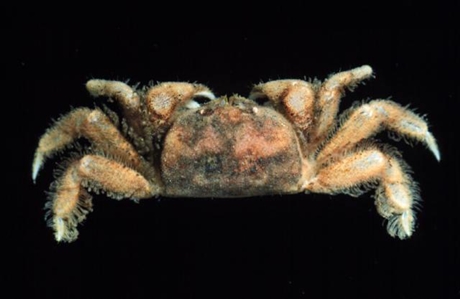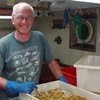General Description
Carapace much broader than long, with fine dorsal granulation that is obscured by a mat of hairs in larger individuals. Eyes reduced, moveable. With 3 well developed pairs of extremely hairy walking legs that bear a fringe of longer setae on the margins (last pair of legs and sternite absent). Up to 1.5 cm wide.
Biology
Three pairs of walking legs instead of the usual four are characteristic of the crab family Hexapodidae, to which this species belongs. Another striking feature is the very broad carapace. They are often found in the papery tubes of species of the polychaete genus Chaetopterus.
Habitat
Often found in the papery tubes of species of the polychaete genus Chaetopterus, intertidal to depths of 50 m.
Reefs
Soft substrates
Coastal shores
Distribution guide
Southern temperate oceans, including south-eastern Australia.
Species Group
Depth
Shore (0-1 m)
Shallow (1-30 m)
Deep ( > 30 m)
Water Column
Max Size
15 mm
Diet
Organic matter
Harmful
Not harmful but a nip from large claws could be painful
Commercial Species
No
Global Dispersal
Native to Australia
Species Code
MoV 702
Conservation Status
- DSE Advisory List : Not listed
- EPBC Act 1999 : Not listed
- IUCN Red List : Not listed







